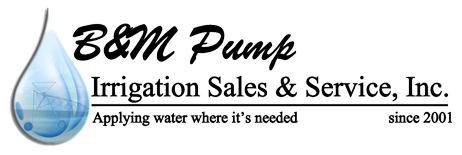What You Need to Know About Downtime During Irrigation
Irrigation downtime is a dirty phrase when it comes to growing crops in Texas. Downtime eats into your bottom line, which is why it’s never smart to cut corners when it comes to maintaining your irrigation equipment. Paying close attention to irrigation and harvesting times, as well as following proper irrigation rotation, ensures your irrigation systems will work when you need them to and that they’ll distribute water equitably. Here’s what you need to know about preventing irrigation downtime to get the most from your crop.
How does downtime affect yields?
In some cases, such as growing alfalfa crops, irrigation management plays a major role in crop yields. Even deep-rooted perennial crops require optimal irrigation in order to grow their best. Irrigation downtime is a key factor complicating the growth of alfalfa and other crops that require multiple cuttings each year. You don’t want to irrigate too close to harvest because it can slow the drying rate of your crops. When crops like alfalfa lie on the field during the curing process, you also can’t perform any irrigation. In other words, there can be a long period of irrigation downtime that can cut into your yields—you have to get the timing just right. Typically, you’ll have a period of six to 20 days from when you stop irrigation until it can be resumed after the crop has been removed.
How can soil moisture levels be maintained?
Irrigation downtime has an impact on soil moisture levels. Harvest periods are when soil moisture levels are at their lowest, and they can often fall below levels required for optimal crop yields. If the soil gets too dry, you might not be able to sufficiently improve the moisture content with irrigation to meet requirements for maximum yields.
Pay close attention to irrigation and your cutting times—there are often improvements that can be made. Consult your irrigation equipment provider to get an understanding of the optimal interval times around cuttings and irrigate as needed before cuttings to make sure that the soil doesn’t get too dry. Flexibility is important, since there’s no hard and fast rule for irrigation. Be aware of soil conditions around cutting times and adjust your irrigation practices accordingly.
How does irrigation rotation improve crops?
Since water shortage can be a big problem no matter where you’re growing crops, you need to follow a practical irrigation rotation procedure. Talk to your irrigation professional about proper scheduling so you can minimize crop water stress and maximize yields. With the right schedule in place, you can reduce your water and labor costs with fewer irrigations while maximizing the use of the moisture that’s already in your soil.
With proper planning and timing, you can minimize irrigation downtime and maximize your yield at your farmland in Texas. Get in touch with the experts at B&M Pump Irrigation Sales & Service, Inc. to learn more about preventing irrigation downtime and how you can maximize profits from your crop. We look forward to assisting you!
Categorised in: Irrigation
